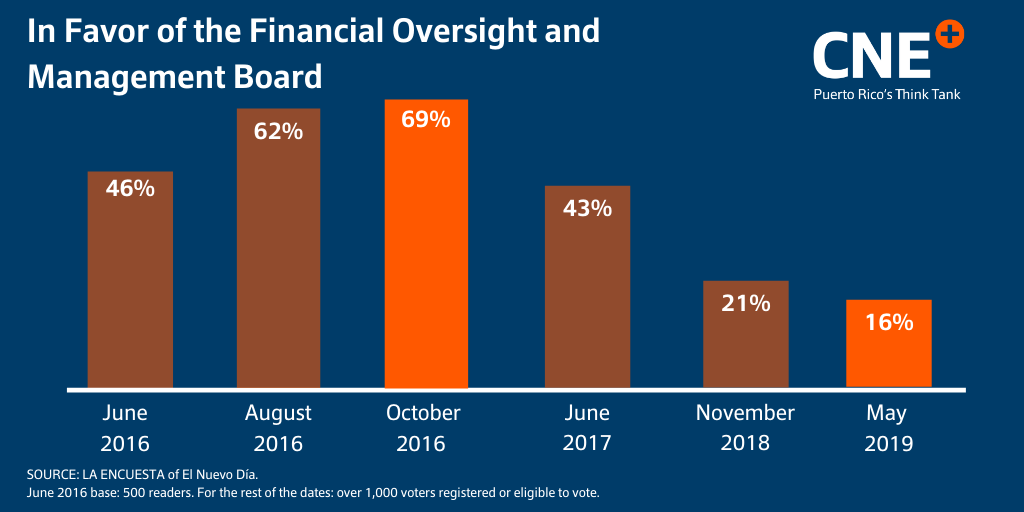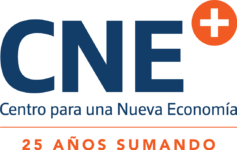
Published on November 5, 2020 / Leer en español
Dear Readers:
We wrap up our Focus 2020 Series this week. Our objective in publishing this series was to have our team of experts take a look at cutting-edge or innovative economic policy ideas to address issues such as economic stagnation, the post-Maria reconstruction process, and the roles of the government and the private sector as they relate to economic development. We think we have accomplished that goal and recommend the governor-elect’s team take a look at these ideas as he or she prepares to take power in January.
This week we also present an analysis of PROMESA’s virtues and defects by the Director of CNE’s office in Washington, D.C., Rosanna Torres. Four years after its enactment, what has worked?; what has failed?; and what is missing? Make sure not to miss her contribution to this Weekly Review.
Finally, the election for president of the United States remains undecided as we close this edition of the Weekly Review. The whole world is watching as the ballot counting continues in Michigan, Pennsylvania, Wisconsin, and a handful of other states. As of this writing, the trend appears to favor Vice President Biden but, as we explained last week, it may take a few days or maybe weeks before the election results are settled. We hope to have additional news by this time next week.
Meanwhile, here in Puerto Rico we also had a close election for governor, but right now it appears Pedro Pierluisi will be the next governor and Jenniffer González will continue as Resident Commissioner in Washington, D.C. This election was surprising in several ways, as new political movements and parties obtained significant support and managed to win several seats in the island’s House and Senate, breaking with fifty years of bipartisan government. In addition, the Puerto Rico Independence Party (“PIP”) reported its best election results since 1956.
It appears, though, that the Popular Democratic Party will control the legislative assembly with a bare majority. Given the governing agenda is full of complicated issues, such as the debt restructuring, the post-Maria reconstruction, and managing the COVID-19 pandemic, this means they will be forced to form alliances and coalitions with representatives of both the left-of-center Movimiento Victoria Ciudadana and the conservative Proyecto Dignidad, as well as with the members elected under the PIP insignia, in order to successfully address those complicated issues during the next four years.
We will dedicate next week’s edition in its entirety to analyzing the implications of election results both in the U.S. and here in Puerto Rico.
—Sergio M. Marxuach, Editor-in-Chief
Insights + Analysis from CNE

Focus 2020: Wrap-Up
Today we conclude our seven-week series, Focus 2020. During the past few weeks we have taken a look at Puerto Rico’s economic history; suggested some ideas for rebuilding state capacity in Puerto Rico; analyzed some lessons learned so far from Hurricane Maria’s reconstruction process; and presented some cutting-edge policy recommendations in the housing (land value capture), industrial policy, social assistance (a universal basic income), and fiscal responsibility policy fields.
We hope you found the analysis and discussion of those ideas interesting and thought-provoking. We also encourage the new administration to take a look at these ideas and incorporate them into its government program for the next four years. In the end, ideas do matter, especially in Puerto Rico, where we keep repeating the mistakes of the past.
Too Many Unkept Promises
By Rosanna Torres – Director, Washington D.C. Office
At a time as painful as this one, with the world experiencing a pandemic of such magnitude, it’s worth remembering that Puerto Rico is still in a worse off situation than many other jurisdictions. There is an entire generation on the island that only knows the word “crisis.” These crises include energy, school, health, financial, economic, political, criminal, and civic, among many others that continue to add up to an increasingly long list. As if all this wasn’t enough, there are also disasters that are not man-made. These include two hurricanes, earthquakes, droughts, and now COVID-19, all of which have been layered one on top of the other in less than three years.
Perhaps this is the reason why it’s difficult for us to remember that, just four years ago, Puerto Rico was already facing a series of challenges that seemed insurmountable. By 2015, the alarms went off regarding a government that was running out of cash, not only of that available to pay its obligations but also of its capacity to offer basic services to its residents. It’s also important to remember that before PROMESA was enacted, Puerto Rico did not have the legal ability to find its way out of the fiscal abyss. Puerto Rico lost its legal standing in 1984 when the United States Congress excluded it from the U.S. Bankruptcy Code. Despite the island’s attempt to create its own restructuring law in 2014, better known as the “Quiebra Criolla”, it was the federal government again, this time the U.S. Supreme Court, that put an end to that local decree in 2016.
Data Snapshot

The widespread economic uncertainty triggered by the COVID-19 pandemic is exacerbated by the debt burden weighing down Puerto Rico’s economy. Thus, the debt restructuring negotiations conducted by the Financial Oversight and Management Board for Puerto Rico are a key element for Puerto Rico’s recovery. In the early stages of PROMESA’s implementation — back in October 2016 — a poll conducted by El Nuevo Día, showed that 69% of the population approved the imposition of the Board. This was probably due to the commonly agreed perception that political parties in Puerto Rico lacked the political will to implement policy changes necessary for the island. After four years, however, the Board’s popularity has shifted dramatically. In May 2019, only 16% of survey respondents expressed approval of the Board’s existence. In sum, public support for the fiscal board is dismal and the island’s future is still uncertain.
On Our Radar...
![]() The Days After the Election – “There will of course be an Election Day — and it could be one of tumult, banners colliding, incidents at the polls and attempted hacks galore. More likely than not, it will end without a winner named or at least generally accepted. America will probably awaken on Nov. 4 into uncertainty. Whatever else happens, there is no doubt that President Trump is ready for it.” And that is what is keeping awake late at night some of the U.S. highest officers in the intelligence community, law enforcement, and the military, writes Ron Suskind for the New York Times.
The Days After the Election – “There will of course be an Election Day — and it could be one of tumult, banners colliding, incidents at the polls and attempted hacks galore. More likely than not, it will end without a winner named or at least generally accepted. America will probably awaken on Nov. 4 into uncertainty. Whatever else happens, there is no doubt that President Trump is ready for it.” And that is what is keeping awake late at night some of the U.S. highest officers in the intelligence community, law enforcement, and the military, writes Ron Suskind for the New York Times.
![]() State Budget Crunch – The Wall Street Journal reports that “The drop in income and sales tax revenue has created a historic crisis for states, with a total shortfall expected in the hundreds of billions of dollars. The projected gaps are greater than 2019’s K-12 education budget for every state combined, or more than twice the amount spent that year on state roads and other transportation infrastructure.” If the federal government does not provide assistance to close these budget gaps, then the states will be forced to increase taxes and cut back on spending, imposing a strong fiscal drag on the incipient economic recovery.
State Budget Crunch – The Wall Street Journal reports that “The drop in income and sales tax revenue has created a historic crisis for states, with a total shortfall expected in the hundreds of billions of dollars. The projected gaps are greater than 2019’s K-12 education budget for every state combined, or more than twice the amount spent that year on state roads and other transportation infrastructure.” If the federal government does not provide assistance to close these budget gaps, then the states will be forced to increase taxes and cut back on spending, imposing a strong fiscal drag on the incipient economic recovery.
![]() The Complexity of the Recovery – “Dr. Pooja Yerramilli, Dr. Folasade P. May and Dr. Vanessa Bradford Kerry discuss the need for long-term political leadership and investment in three critical areas: the social determinants of health, public health infrastructure, and access to health services” in this story for Forbes magazine.
The Complexity of the Recovery – “Dr. Pooja Yerramilli, Dr. Folasade P. May and Dr. Vanessa Bradford Kerry discuss the need for long-term political leadership and investment in three critical areas: the social determinants of health, public health infrastructure, and access to health services” in this story for Forbes magazine.
